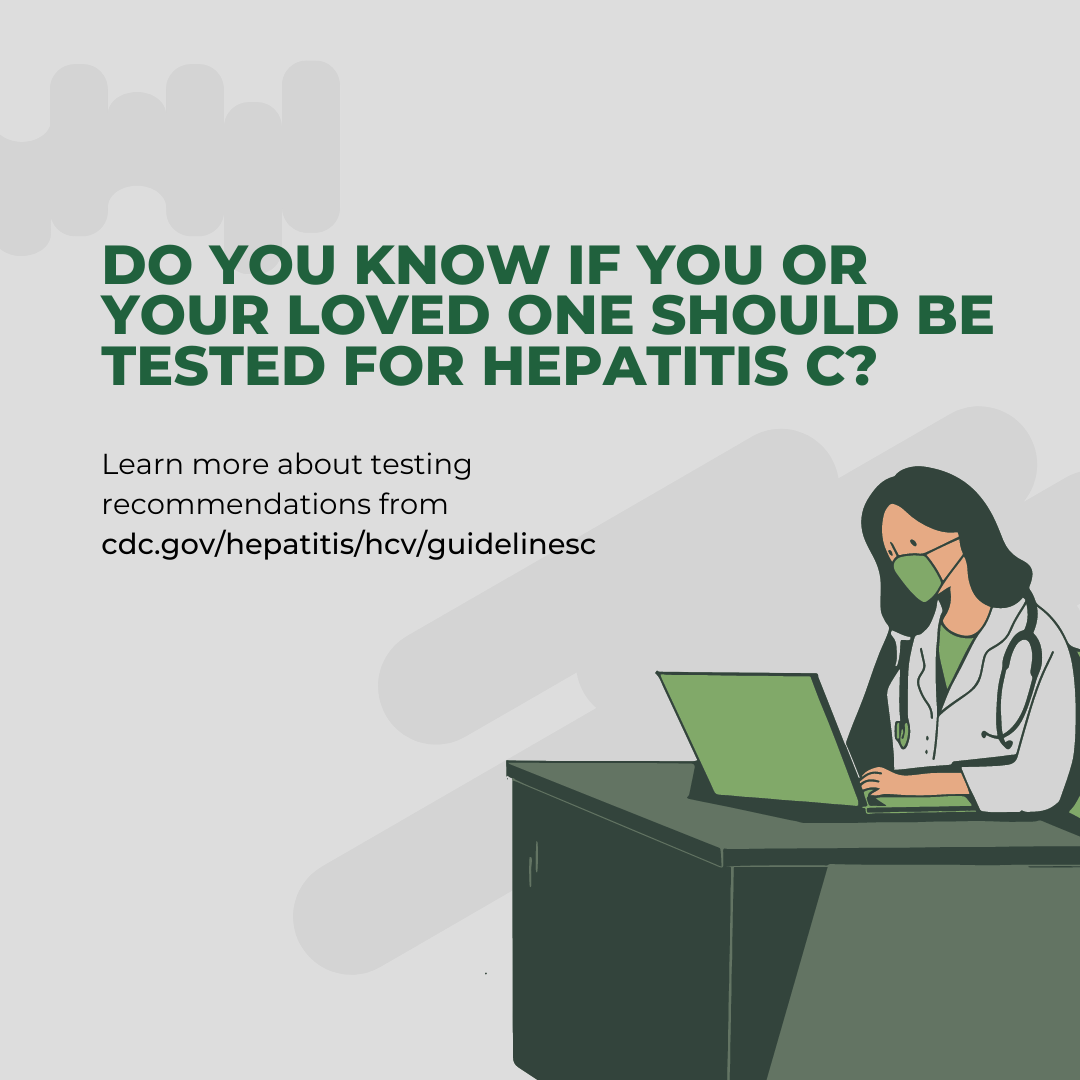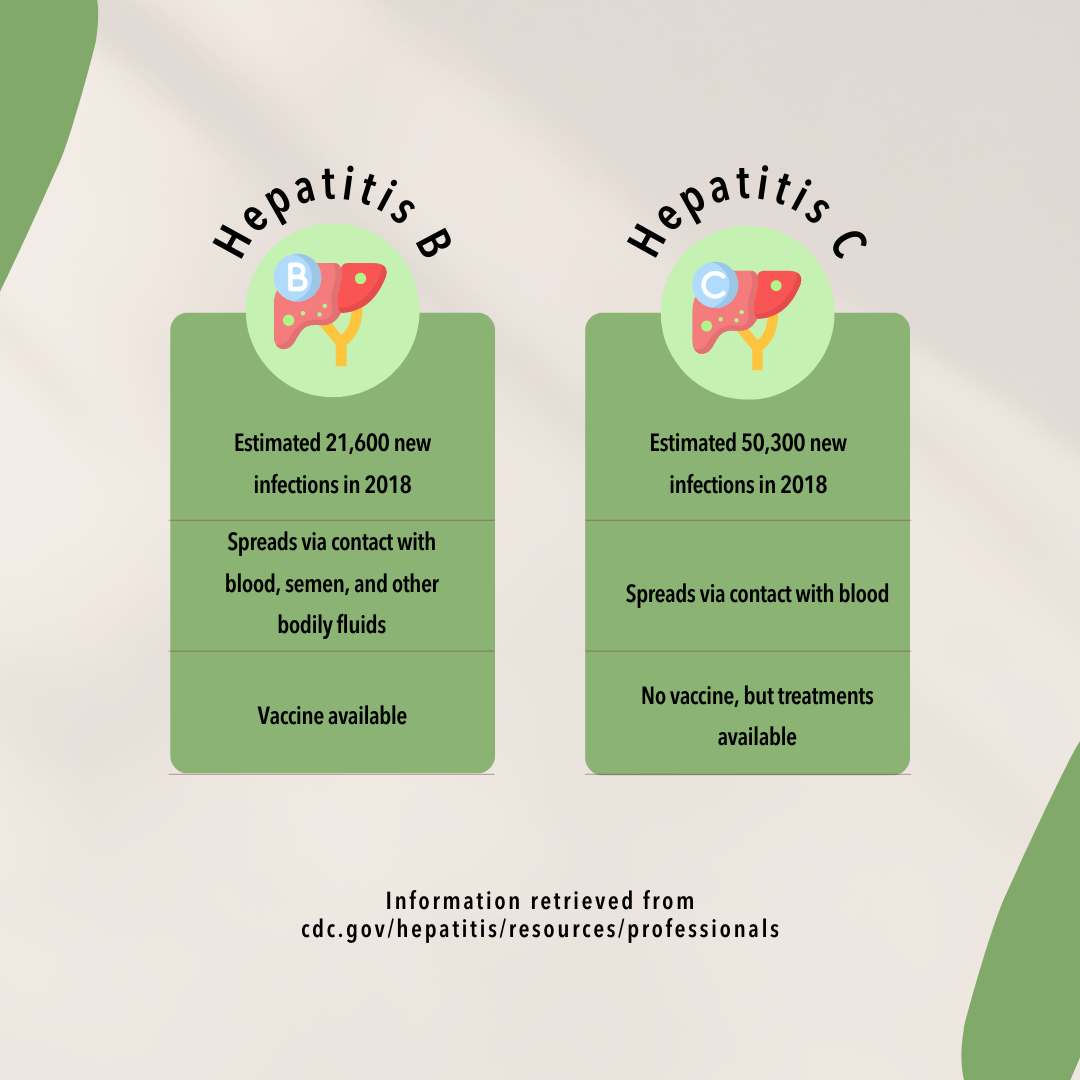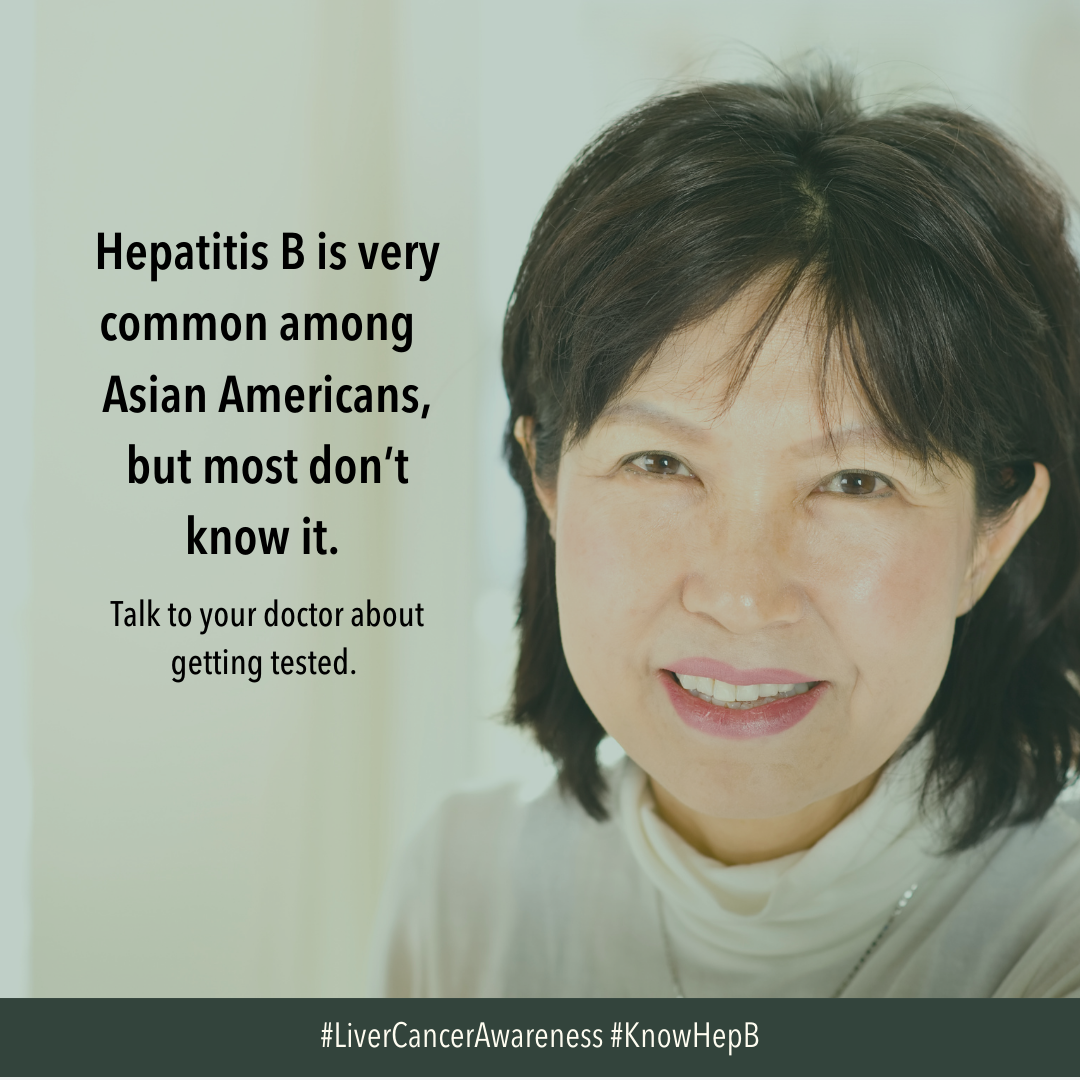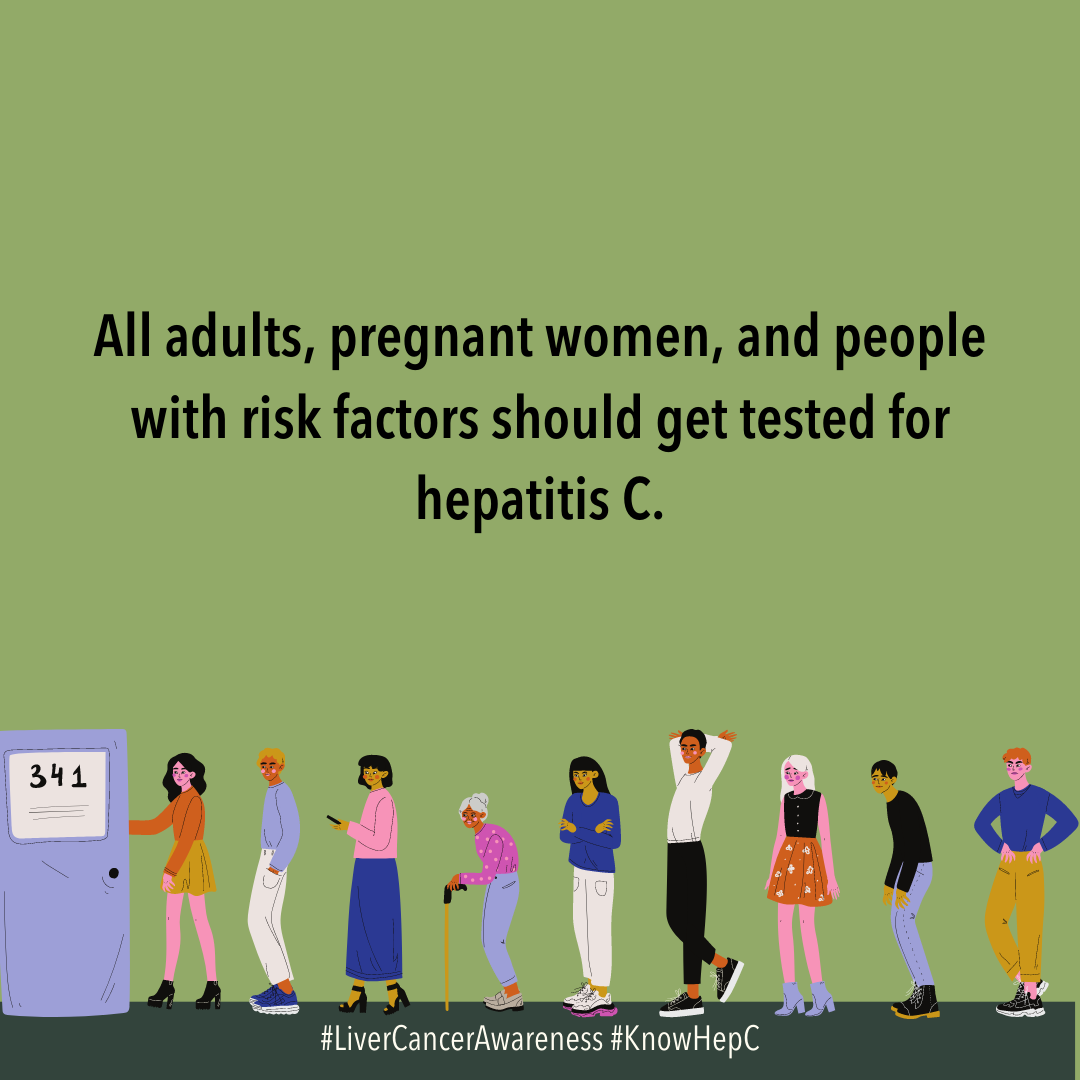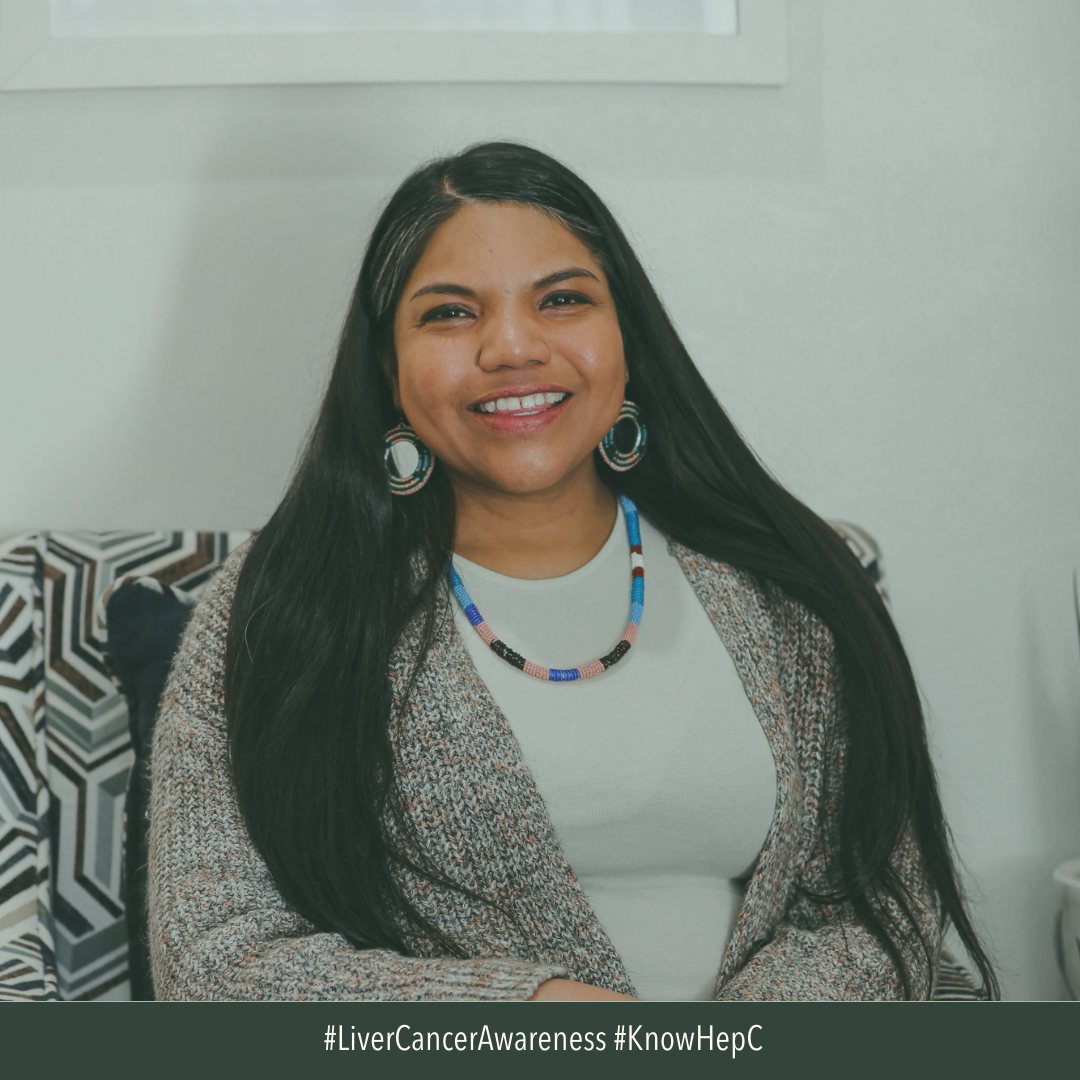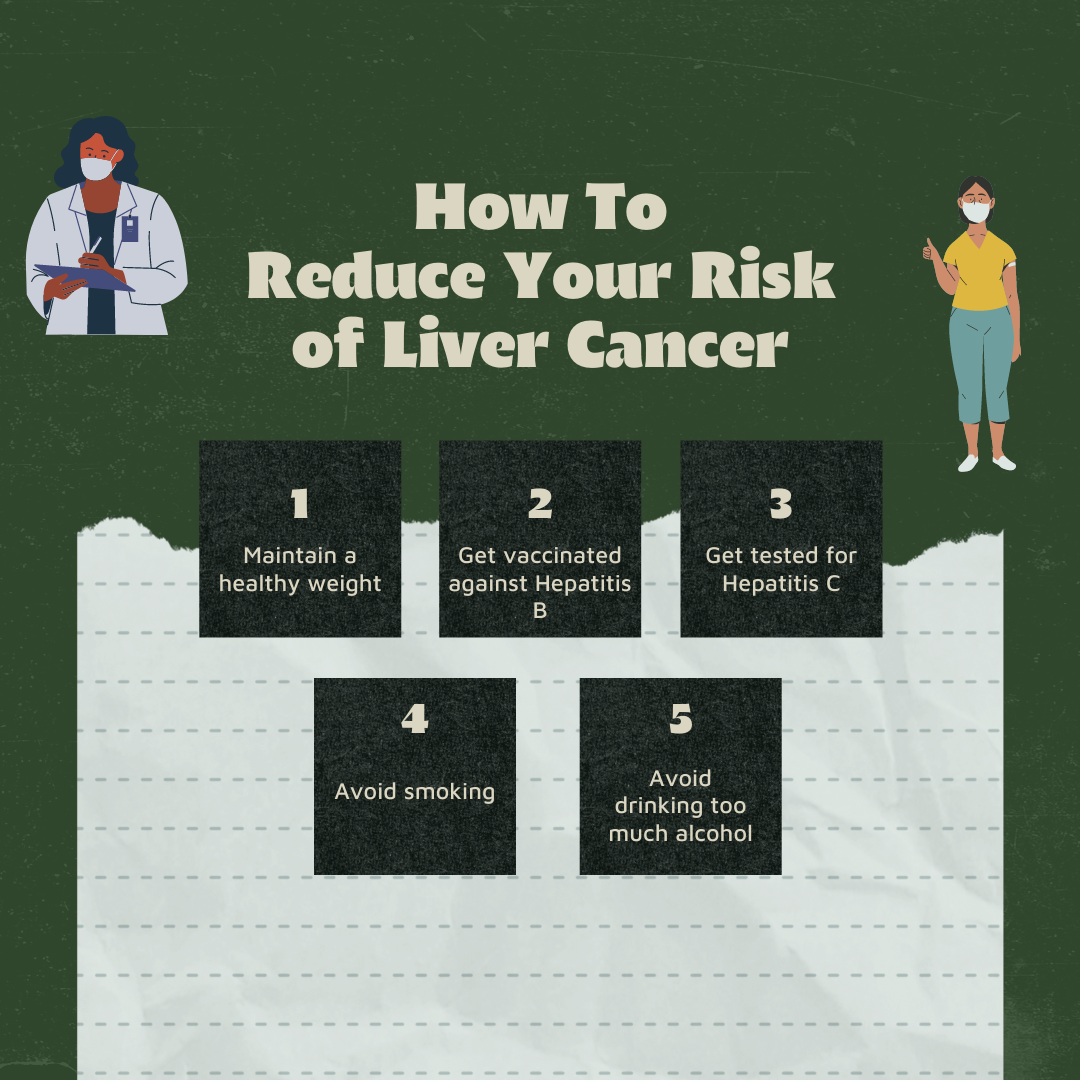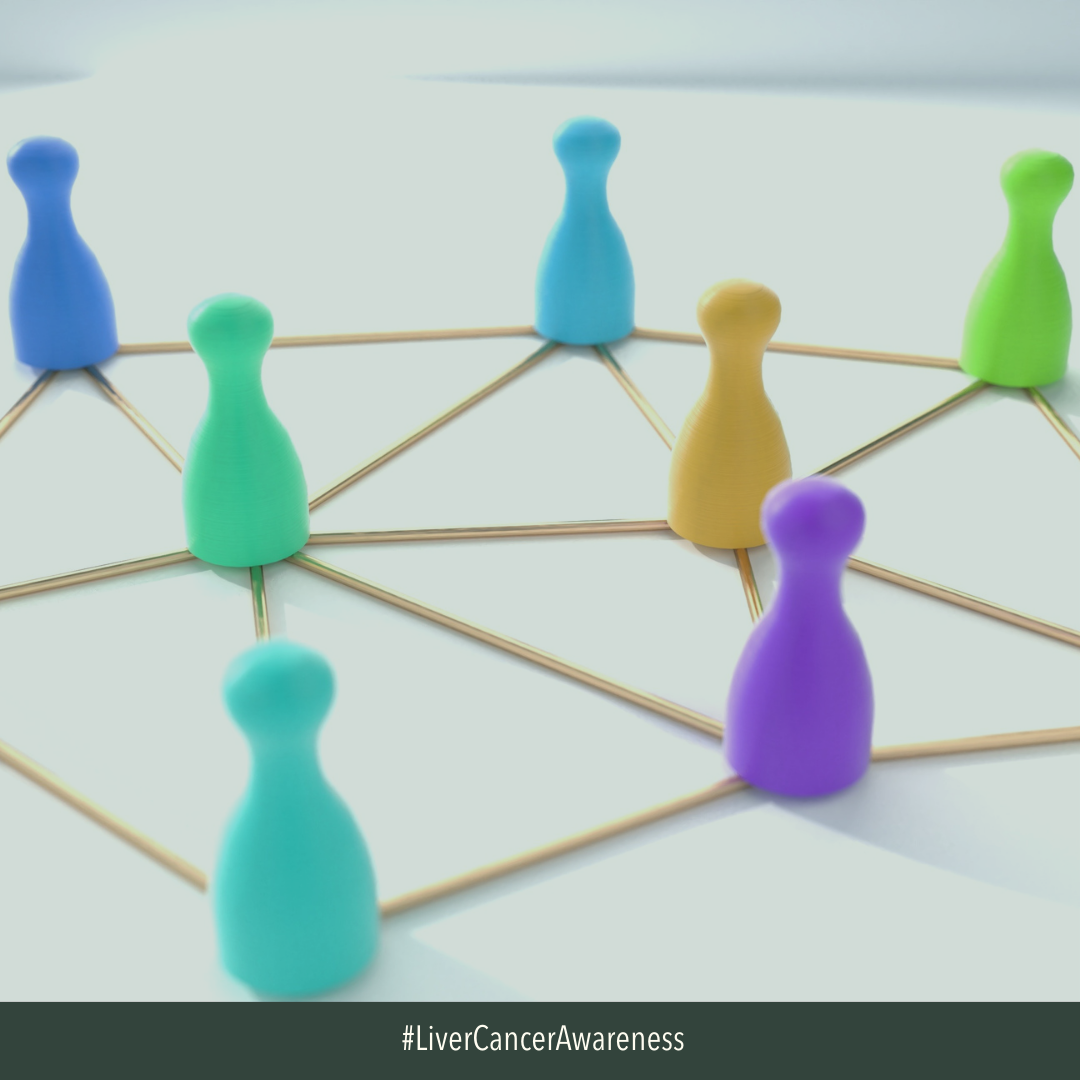About Viral Hepatitis and Liver Cancer Awareness Month
Hepatitis Awareness Month in May is an annual observance that provides a specific opportunity to promote awareness of hepatitis and also the link between hepatitis B, hepatitis C and liver cancer. National Hepatitis Testing Day on May 19th provides an opportunity to encourage at-risk communities to get tested for viral hepatitis [1].
October is Liver Cancer Awareness Month [2]. This month provides an opportunity for the wider cancer control community and institutions to promote awareness among providers and the public about liver cancer risk reduction through viral hepatitis prevention, screening and treatment.
Data and Statistics
In 2019, the latest year for which incidence data is available, in the United States, 35,563 new cases of liver and intrahepatic bile duct cancer were reported, and 27,958 people died of this cancer [3]. For every 100,000 people, eight new liver and intrahepatic bile duct cancer cases were reported and seven people died of this cancer [3].
Basic Facts About Viral Hepatitis and Liver Cancer
Despite the strong link between viral hepatitis and liver cancer, many individuals may not know about hepatitis B or hepatitis C virus infections as major risk factors. Chronic hepatitis B and C are lifelong infections that are clinically silent in most patients [4]. Approximately two-thirds of people infected with hepatitis B and approximately half of people infected with hepatitis C are unaware of their condition [5].
- Liver cancer is the fastest-growing cause of cancer deaths in the United States. New liver cancer cases increased 38% and liver cancer deaths increased 56% between 2003 and 2012 [4].
- Hepatitis B and hepatitis C infections cause about 80% of the world’s hepatocellular carcinoma worldwide, the most common form of liver cancer. Other causes of liver cancer include excessive alcohol consumption, obesity, non-alcoholic fatty liver disease, rare metabolic disorders, and type II diabetes [4].
- Liver cancer caused by chronic hepatitis B can be prevented through hepatitis B vaccination, or early detection and treatment of hepatitis B infections [4].
- Chronic hepatitis C can be cured with effective treatment, reducing the risk of liver cancer [4].
Best Practices for Communicating About Viral Hepatitis and Liver Cancer
Highlight the link between viral hepatitis and liver cancer, and increase knowledge about how viral hepatitis is transmitted, prevented, and treated
- Encourage health care providers to learn about who is at risk of viral hepatitis and promote testing for chronic hepatitis B and hepatitis C infections. Examples of individuals at high risk of hepatitis B include men who have sex with men, people who inject drugs, people with HIV, and pregnant women [6]. Additionally, all adults aged 18 years and older should be tested for hepatitis C, including pregnant individuals and people who have ever injected drugs or shared needles [6]. Missed opportunities for prevention through vaccination and lack of awareness of infection are some of the challenges to eliminating viral hepatitis [7]. Health care providers can provide recommendations on vaccination, screening, prevention counseling, and referrals for additional health care services [7].
- Encourage health care providers to promote hepatitis B vaccination as cancer prevention. Lack of perceived patient risk was also cited as a barrier to compliance [8].
- Carry out simple on-site education interventions to improve knowledge and acceptability of viral hepatitis testing and build critical partnerships to reach communities disproportionately affected [9]. Baseline knowledge about hepatitis C is poor among high-risk populations like injection drug users [9].
Educate communities and health care providers about populations likely to be affected
- Educate communities that viral hepatitis and liver cancer starts with prevention. There is an effective vaccine for hepatitis B and approximately 90% of children under three are fully immunized, but only about a quarter of adults are fully immunized. Vaccination efforts should focus on populations at increased risk [4].
- Reduce transmission of existing infections to prevent viral hepatitis and liver cancer. A simple blood test can screen for infection, and both hepatitis B and C are treatable. Harm reduction strategies may help reduce transmission among people who inject drugs and those who are incarcerated [4].
- Encourage providers to increase collection of data on risk factors for chronic hepatitis B and hepatitis C infections. Data can help us understand the burden of viral hepatitis, identify trends in patient characteristics, risk factors, and geographic areas, which in turn helps focus resources in communities and settings where they can be most impactful [7].
Decrease stigma around hepatitis B and hepatitis C infections
- Recognize that individuals affected by viral hepatitis infections may feel stigmatized. Perceived stigma associated with hepatitis C infections can lead to anxiety and excessive fear of transmission, often resulting in social isolation and reduced intimacy in relationships [10-11].
- Encourage providers to recognize their own bias regarding those infected with hepatitis C virus [10].
- Raise awareness about viral hepatitis infections and normalize screening for recommended groups.
Debunk commonly held misconceptions and myths
- Address misbeliefs regarding hepatitis B infection, such as the belief that hepatitis B could be spread through sharing food or utensils or through the air [12]. Some individuals may not realize that chronic hepatitis B infection may be a result of perinatal transmission, which occurs when a parent infected with hepatitis B passes the infection to their infant during pregnancy [13].
- Educate communities that hepatitis C infection can be cured. In a survey of a high-risk urban population, most respondents were not sure or did not think that hepatitis C could be cured, and over half expressed misunderstandings regarding treatment side effects [9].
- Affirm that individuals should not understate their risk of chronic hepatitis. Individuals should not assume that health care providers will tell them they need to be tested. Healthcare providers should not assume that patients will display obvious symptoms such as yellow eyes [12].
Communicating with Diverse Audiences
Certain groups experience disparities in viral hepatitis screening, incidence, mortality, and survival [14]. Health disparities are complex and affected by various factors, such as social determinants of health, behavior, biology, genetics, and more [14].
An annual report from the American Cancer Society, CDC, the National Cancer Institute (NCI) and the North American Association of Central Cancer Registries noted that between 2010 and 2014, death rates associated with liver cancer increased in White, Black and Hispanic men and women and American Indian/Alaska Native men, with more than twice as many men diagnosed with liver cancer as women across all racial/ethnic groups [15].
Below you will find additional considerations for these specific audiences, including: Black/African American, Hispanic/Latin/x/o/a, Asian Americans, Native Hawaiians and Pacific Islanders [AANHPI], and American Indian/Alaska Native [AI/AN], LGBTQI+ individuals and other at-risk groups.
Communication-related issues may also play a role in cancer disparities [16]. Consider the information most useful to each diverse group. It is important to tailor communication to these populations of focus with messaging that also addresses conditions where these communities live, learn, work and play, as these factors can impact a wide range of health risks and outcomes [17].
Black persons have the fourth highest incidence rate of liver cancer among racial/ethnic groups [3]. According to the Hepatitis B Foundation, between 5% and 15% of people have chronic hepatitis B infection in some Black communities. Black community members often do not know they are infected due to limited disease awareness and health care access [18].
Messaging for this group may focus on improving awareness and access to hepatitis B information, including resources on screening, vaccination and follow-up care. It is important to highlight that the hepatitis B vaccine can help lower liver cancer risk for the greater community. Messaging can also encourage public health and community providers to work together to support culturally-appropriate liver cancer risk reduction and control efforts, including improving access to viral hepatitis screening, vaccine access, and education on reducing risk factors for liver cancer [19].
Hispanic/Latinx/a/o persons have the highest incidence rate of liver cancer among racial/ethnic groups [3]. They also tend to be diagnosed with liver cancer at later stages and with more advanced disease due to lower screening rates for liver cancer via blood or imaging tests and reduced access to health care [20, 21].
Messaging focused on testing for viral hepatitis and vaccination are keys to risk reduction in this community [22]. For example, messages can encourage individuals to talk to their provider about the hepatitis B vaccine, getting tested for hepatitis C, and monitoring alcohol intake. In addition to these points, messaging for providers may encourage culturally-appropriate conversations with patients to manage co-existing conditions such as diabetes, obesity, and high blood pressure, which may help reduce the incidence of liver cancer [20].
AANHPI individuals have the second highest incidence rate of liver cancer among racial/ethnic groups [3]. AANHPI individuals make up about 6% of the U.S. population, but account for more than 60% of people in the U.S. with hepatitis B [23]. Despite being more likely to die from liver cancer than other racial/ethnic groups, individuals in this group report poor knowledge regarding the link between hepatitis B and liver cancer [8, 24]. CDC also found that among AANHPI persons, knowledge levels about hepatitis B were low and individuals were confused about how the virus was transmitted [12]. Two out of three AANHPI persons with hepatitis B do not know they are infected [23].
A communication campaign designed for these communities found that that stigma towards those affected by hepatitis B was commonly reported [12]. Messaging for this priority population may focus on encouraging AANHPI individuals at risk to talk to their providers about getting tested for hepatitis B and receiving vaccination, if needed. Messaging tailored towards health care providers may focus on reducing stigma and encouraging culturally appropriate education on viral hepatitis transmission, treatment, and prevention for patients in this community.
AI/AN persons have the third highest incidence rate of liver cancer among racial/ethnic groups, with the highest incidence rates occurring in the Pacific Coast [3]. AI/AN persons in the U.S. are disproportionately affected by hepatitis C virus infections [25]. Insufficient access to treatment for hepatitis C infection remains a barrier for many AI/AN communities [26].
Messaging for this community should be culturally-appropriate and provide information on hepatitis C infection as it relates to liver cancer. Additional messages that emphasize risk reduction, increasing access to hepatitis C infection screening, and treatment may also be beneficial [27]. Messages tailored to providers can increase awareness of the availability of Urban Indian Health Programs (UIHP) as a culturally appropriate place for urban AI/AN persons to receive hepatitis B vaccinations and/or hepatitis C testing [27].
Men who have sex with men are at a higher risk for developing hepatitis B [28]. About 20% of new hepatitis B cases occur within this group, with individuals reporting limited knowledge about hepatitis B prevention, transmission or vaccination [29-31]. Given current outbreaks of hepatitis A across the U.S., gay and bisexual men are encouraged to get vaccinated for both hepatitis A and B [28].
Messaging towards this community should highlight that both hepatitis A and hepatitis B can be prevented with safe, effective vaccines and that getting vaccinated will protect your health and prevent further spread of disease [28]. Provider messaging may highlight the importance of recognizing at-risk populations and encouraging testing and/or vaccination as appropriate.
People who inject drugs are at an increased risk of liver cancer. Hepatitis B and hepatitis C are bloodborne illnesses that may be transmitted via needle sharing and any equipment used to prepare and inject drugs [4, 32]. Nearly 75% of new hepatitis C infections are linked to injection drug use [33-34]. Those who have difficulty accessing health care, such as persons who are incarcerated, persons experiencing homelessness and individuals who are uninsured, have an overall increased risk of hepatitis B and C [4].
Health care provider messaging should acknowledge that some individuals who inject drugs may face stigma, and in addition to drug-related support, providers should offer hepatitis B vaccination information [32]. Messaging that highlights the importance of offering hepatitis B vaccination and testing in homeless shelters can be an effective strategy to communicate with individuals who are difficult to reach with commonly used strategies [35].
Viral Hepatitis and Liver Cancer Resources |
|
|---|---|
| Resource | Description |
| The ABCs of Viral Hepatitis | The ABCs of Viral Hepatitis provides basic information for health care providers and community members about how hepatitis B and hepatitis C are transmitted. |
| CDC’s Know Hepatitis B | CDC’s Know Hepatitis B initiative provides prevention and treatment information specifically for Asian Americans/Pacific Islanders. |
| CDC’s Know More Hepatitis | CDC’s Know More Hepatitis initiative provides information and resources on hepatitis C. |
| CDC's National Get Tested Website | Provides testing information and locations across the U.S. |
| Coalition Against Hepatitis for People of African Origin | This national community coalition works with community partners across the U.S. to raise awareness about hepatitis B, particularly among African immigrants. |
| The Comprehensive Cancer Control National Partnership (CCCNP) is focused on providing technical assistance and capacity-building for CCC coalitions to increase HBV and HPV vaccination and reduce vaccine-preventable cancers. The Vaccine- Preventable Cancers workgroup with the National Partnerships has compiled resources to help CCC coalitions working on HBV. | |
| Hep B United | Hep B United works with local coalitions to raise community awareness and hold vaccination, screening and testing events, particularly for Asian American communities. |
| Liver Cancer | Information on liver cancer provided by the CDC. |
| Strategies to Reduce Viral Hepatitis-Associated Liver Cancer | Summarizes National Academy of Sciences report findings in a cancer context for use by policy makers and the cancer community. |
| The University of New Mexico’s Project ECHO | The University of New Mexico’s Project ECHO provides training to primary care clinicians to provide specialty care services, and has “transferable lessons for building capacity in primary care” (NASEM, 2017). |
| University of Washington National Hepatitis Training Center | The University of Washington National Hepatitis Training Center offers free educational resources for clinicians on hepatitis B and hepatitis C. |
| U.S. Department of Veterans Affairs | Brochures and patient education materials for veterans affected by viral hepatitis. |
| Viral Hepatitis and Liver Cancer Prevention Profiles | These state-specific and general profiles help improve policy makers and cancer control professionals’ awareness of viral hepatitis risk factors and evidence-based prevention strategies, including PSE strategies to reduce the burden of viral hepatitis and liver cancer nationwide. |
Viral Hepatitis and Liver Cancer Awareness Month Messages and Graphics
| Message | Suggested Graphic |
|
October is #LiverCancer awareness month! Learn about the viruses that cause 60%+ of liver cancer http://bit.ly/2pyU0QF |

|
|
Learn more about testing recommendations for hepatitis C virus http://bit.ly/2hZwEP6 |
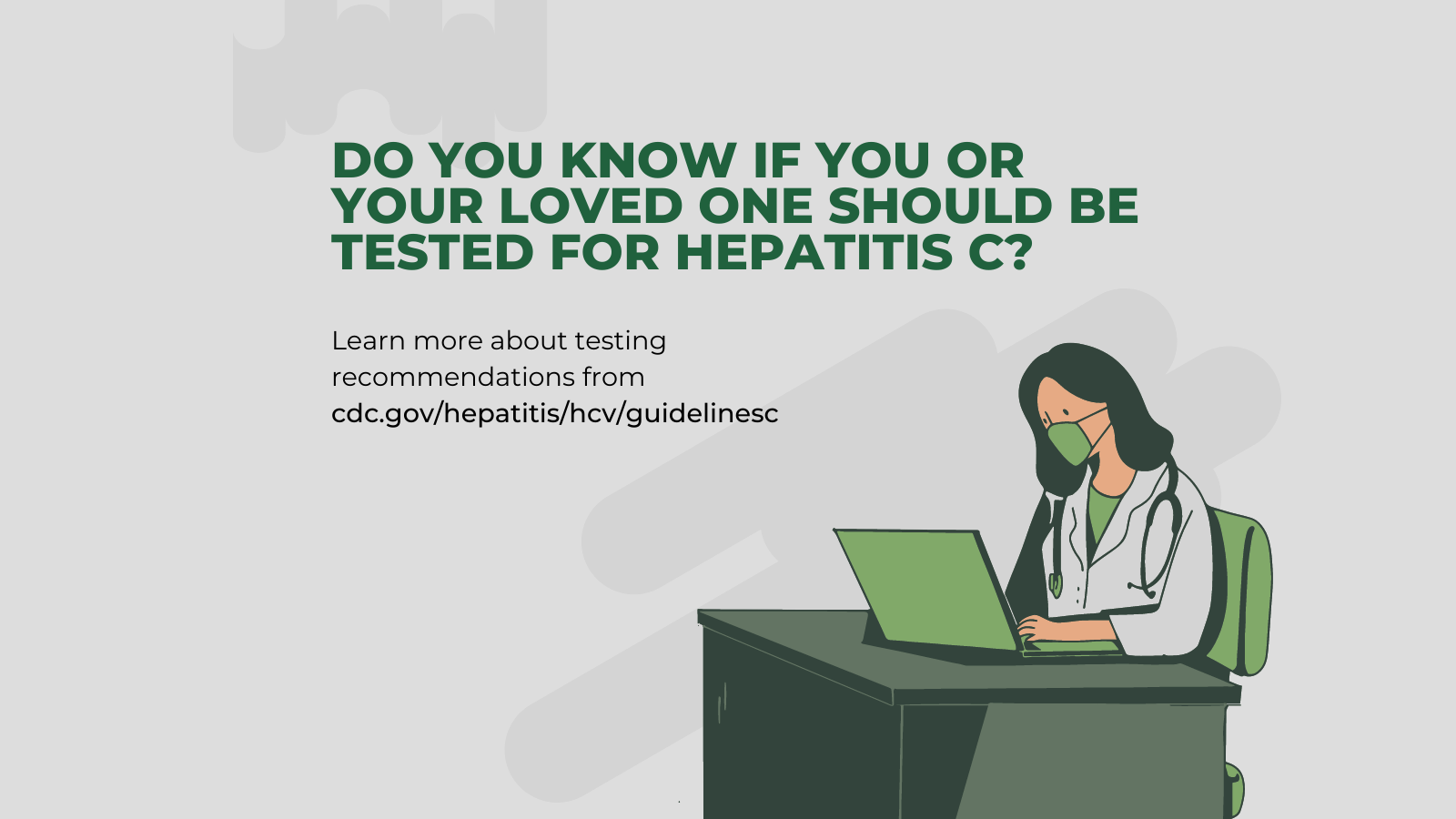
|
|
#DYK the important differences between hepatitis B and C infections? Browse these CDC fact sheets to learn more: https://bit.ly/3bYqC3q |
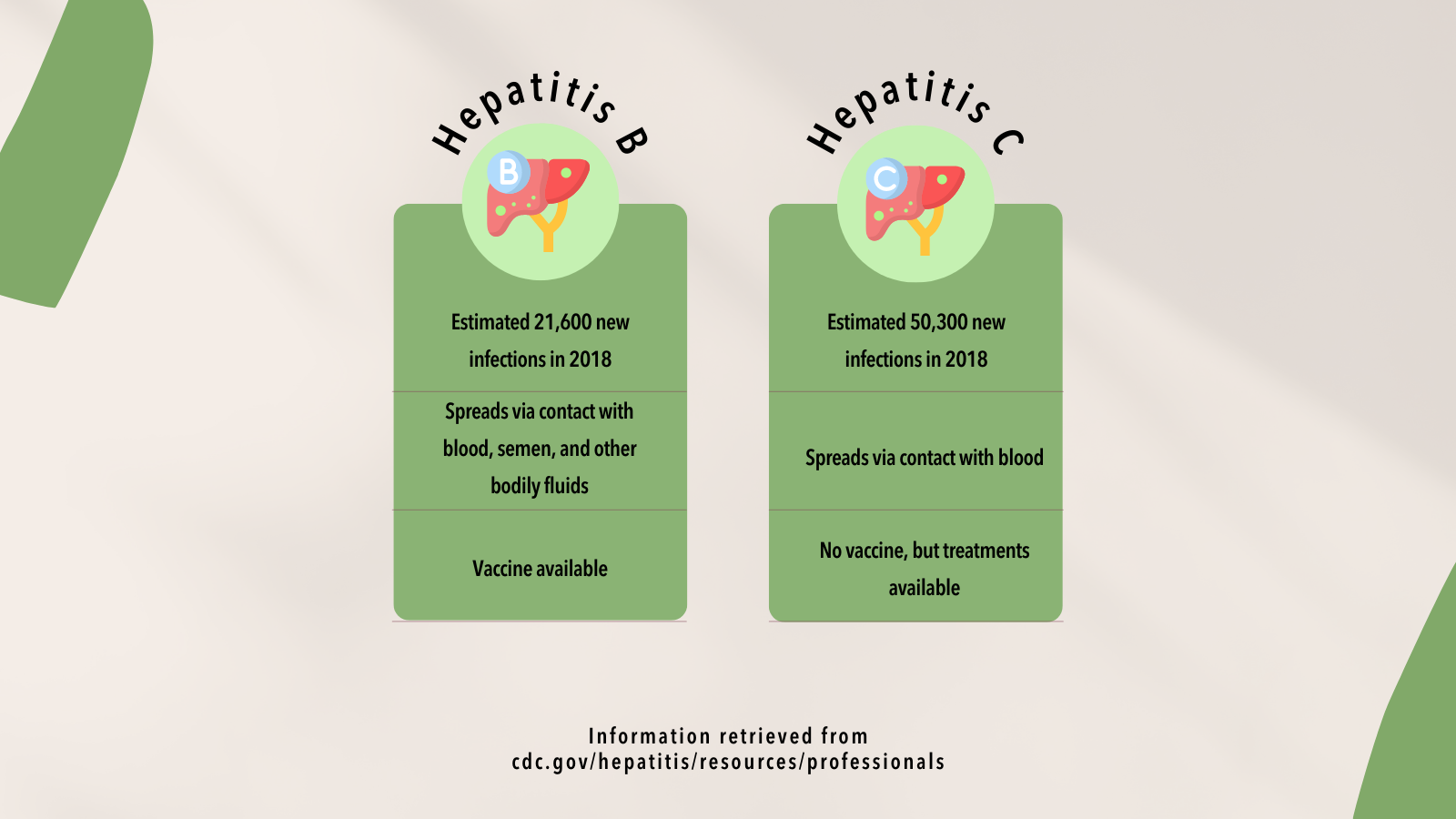
|
|
#DYK #hepatitisB is common among #AsianAmericans? Talk to your doc about getting tested: https://bit.ly/3kXIjyW |

|
|
How is #hepatitisC spread? Get the facts from |
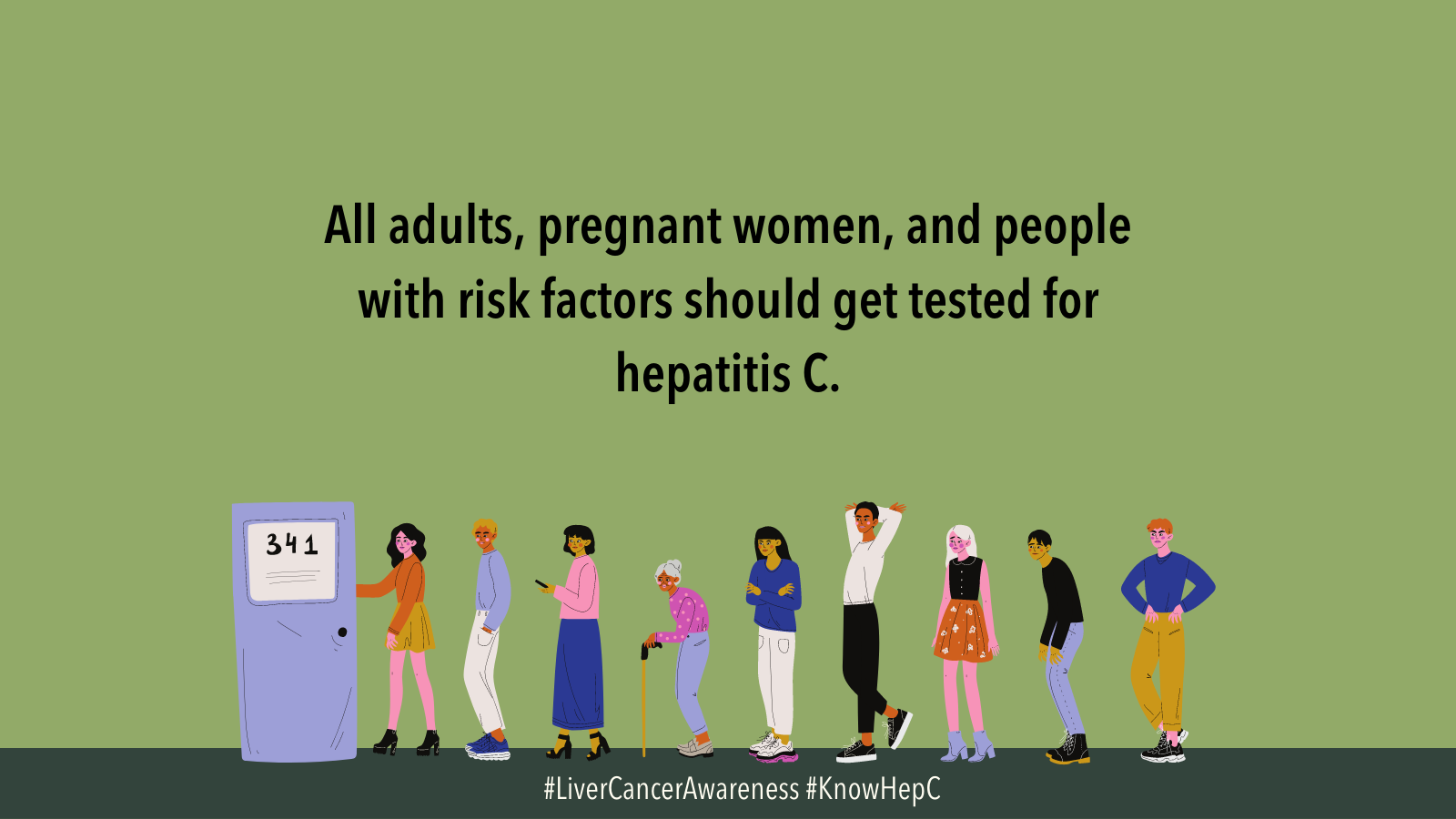
|
|
Men who have sex with men are at risk for viral hepatitis. Get the facts and talk to your doc about getting vaccinated: https://bit.ly/3pqSRuO #GWCC #KnowHepB |
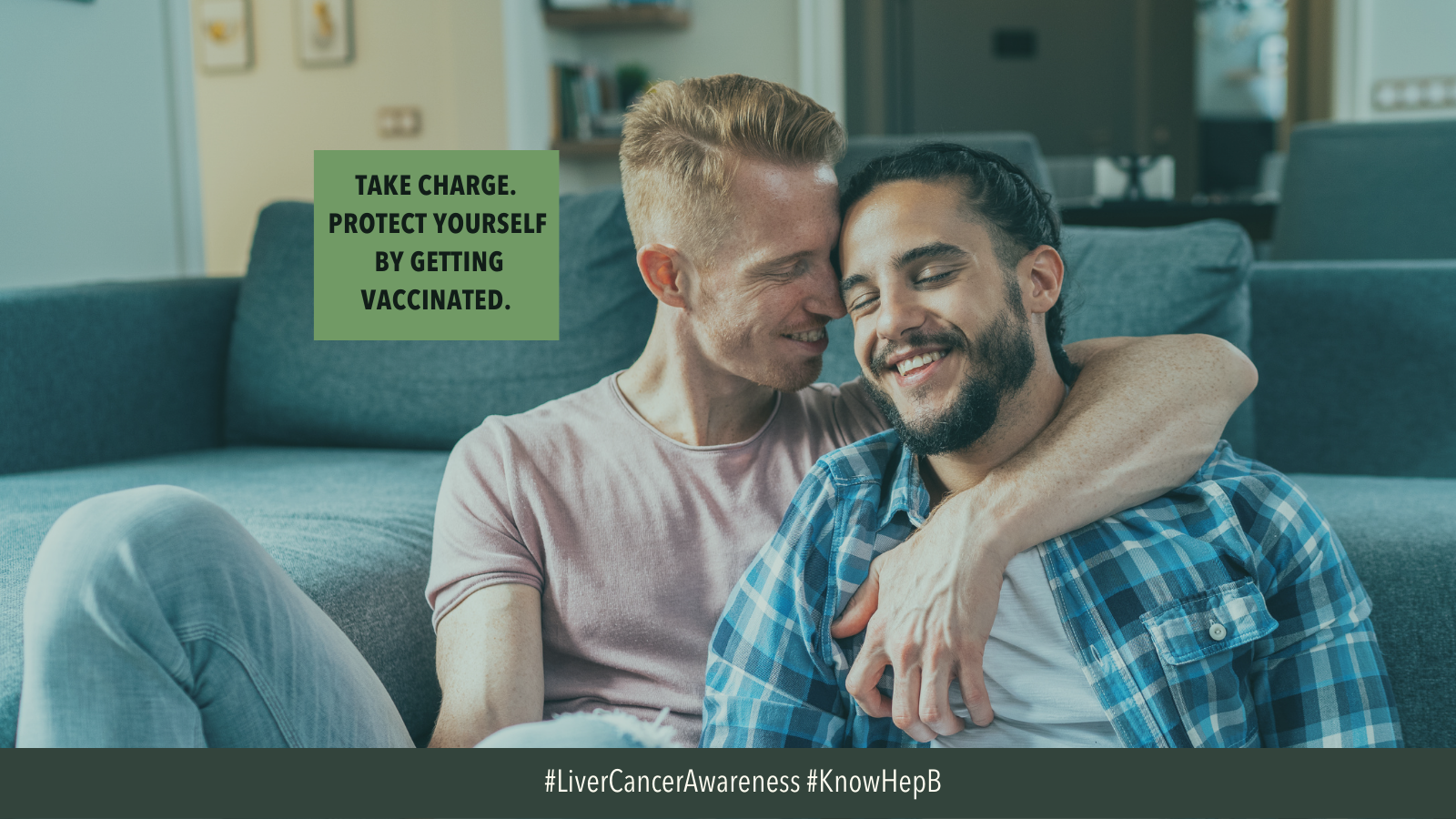
|
|
Check out @CDChep's “Know More Hepatitis” campaign & spread the word on the impact of #HepatitisC on all adults: http://bit.ly/2nLIAuH |

|
|
Hispanic/Latinx/a/o persons are more likely to be affected by #viralhepatitis & #LiverCancer. Learn more about it here https://bit.ly/3PtOWb9 |
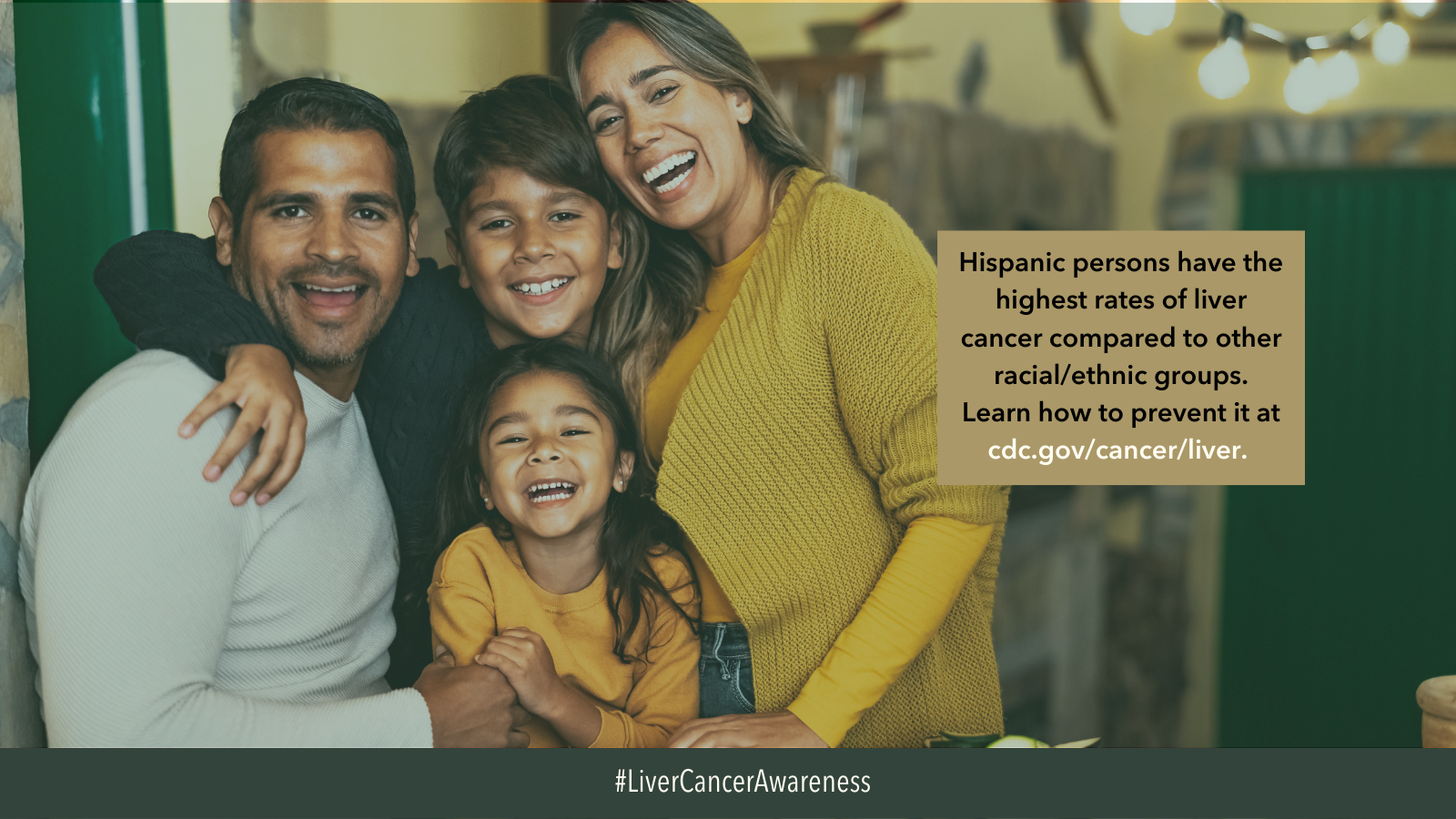
|
|
Maintaining a healthy weight, reducing your alcohol intake, and getting vaccinated for #HepB and tested for #HepC are some ways to reduce the risk of #LiverCancer #GWCC #KnowHepB #KnowHepC https://bit.ly/3bZ4FRQ |
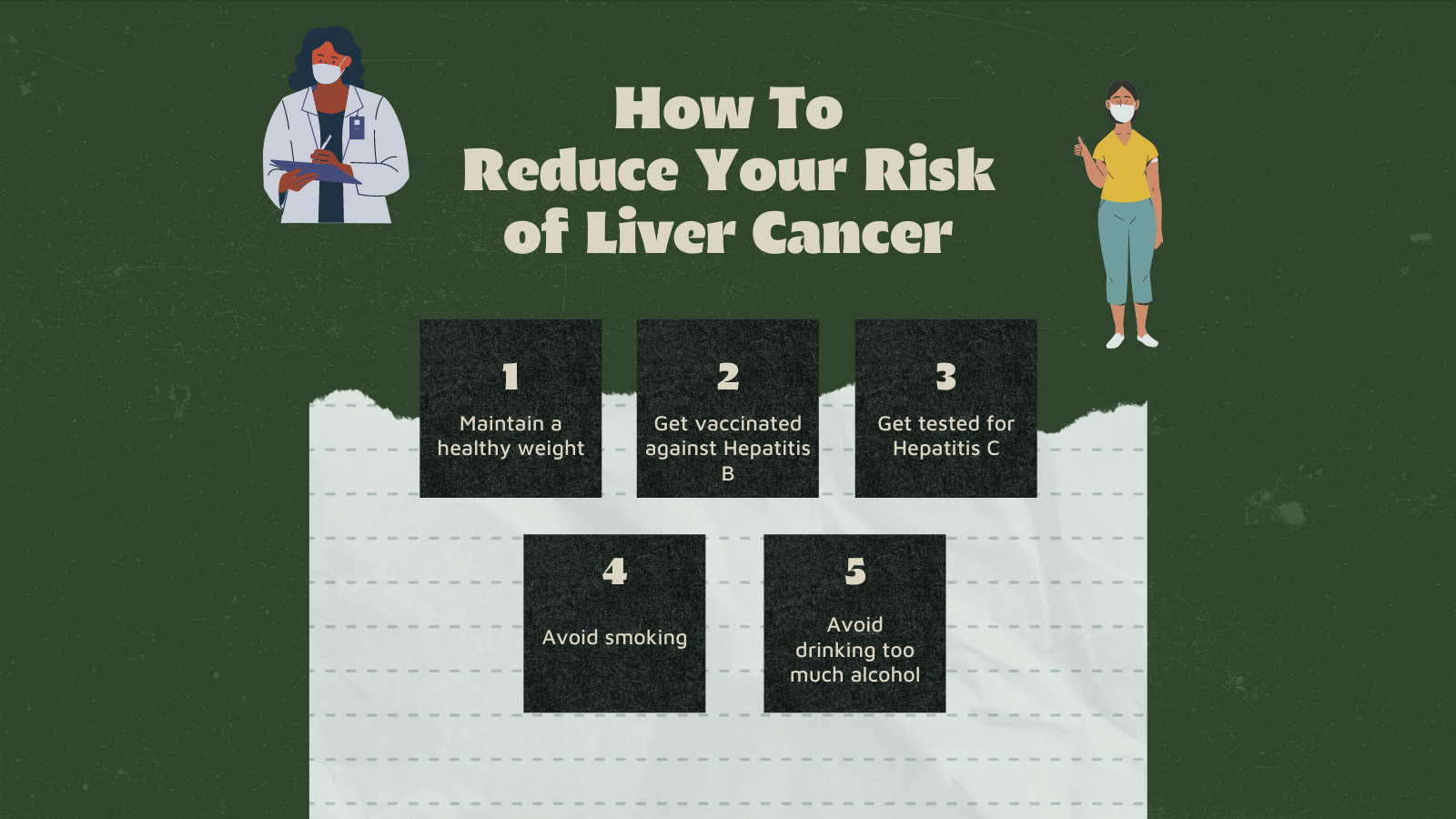
|
|
Public health professionals, address viral hepatitis-related liver cancer through #PSE approaches. Read this fact sheet for some ideas: https://bit.ly/2JJ3hTu |

|
|
An estimated 41% of US adults have delayed or avoided medical care because of the #pandemic. Talk to your doctor about safely resuming viral hepatitis screening, care, and next steps. #GWCC #KnowHepB #KnowHepC #LiverCancerAwareness |
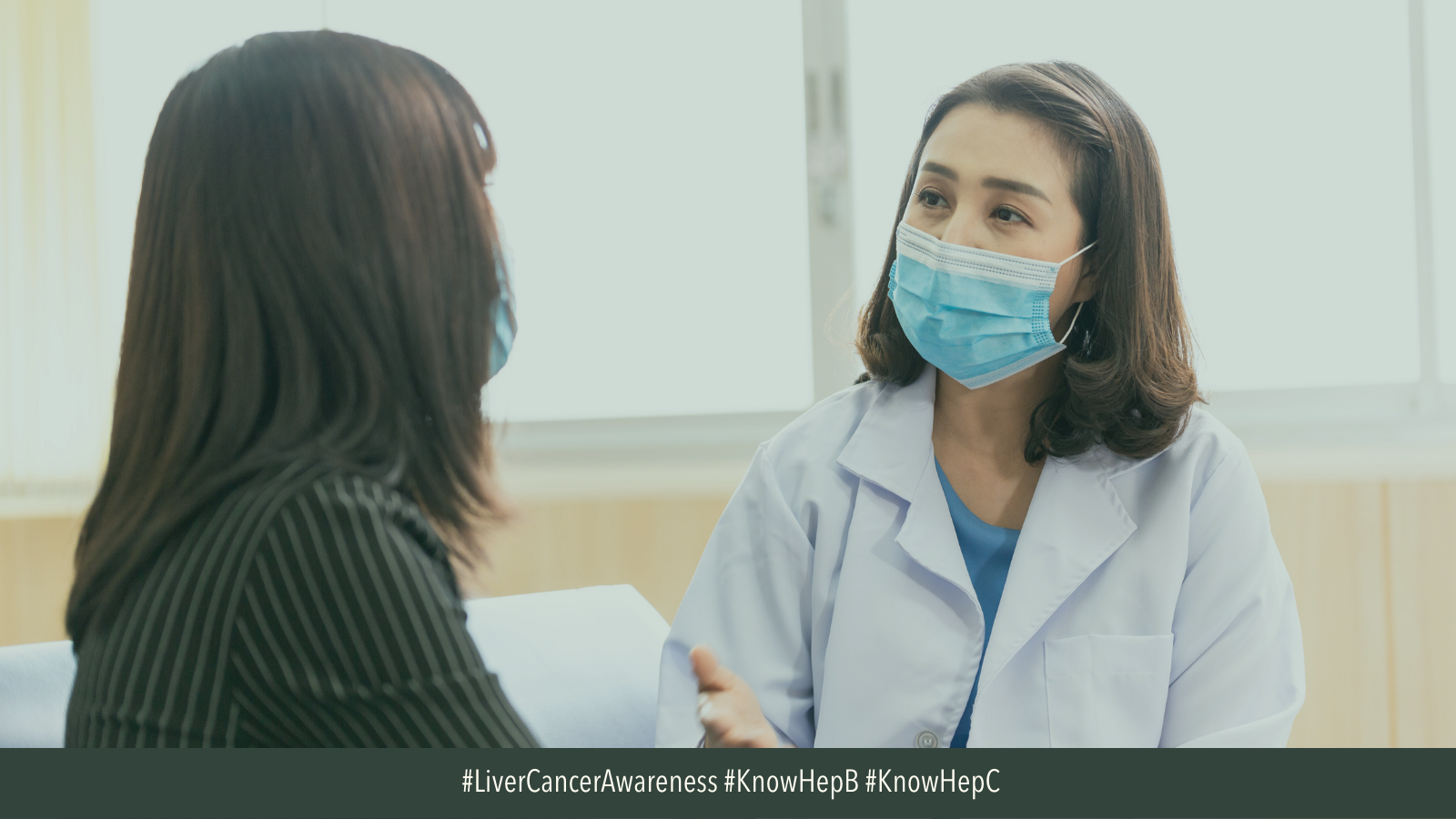
|
- How to post on Facebook
-
- Download the suggested graphic.
- Highlight the corresponding message with your cursor. Right click and select "Copy."
- Open Facebook. If you aren't already logged in, enter your email address (or phone number) and password, then tap "Log in."
- Tap the post box. This box is at the top of the News Feed. If you're posting to a group, you'll find the box just below the cover photo. There will generally be a phrase like "Write something" or "What's on your mind?" in the box.
- Tap "Photo/Video" near the middle of the post screen, then select the downloaded graphic to upload and tap "Done." Doing so adds the photo to your post.
- Tap "Post." It's in the top-right corner of the screen from the app, or the bottom-right from your computer. Doing so will create your post and add it to the page you're on.
| Message | Suggested Graphic |
| October is Liver Cancer Awareness Month. Did you know viral hepatitis B and C cause more than 60% of the most common form of liver cancer? Learn about viral hepatitis and liver cancer prevention: http://bit.ly/2pyU0QF #GWCC #KnowHepB #KnowHepC |
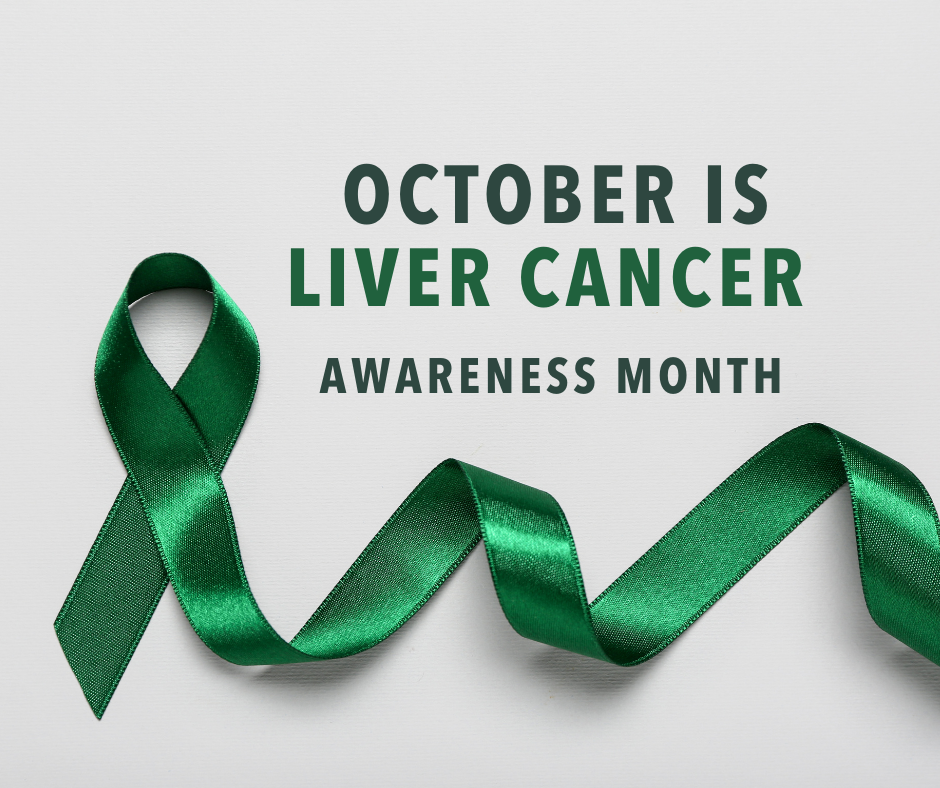
|
| Viral hepatitis can cause #livercancer. Do you know if you or your loved ones should be tested? Learn about testing recommendations: http://bit.ly/2hZwEP6 #KnowHepC #GWCC |
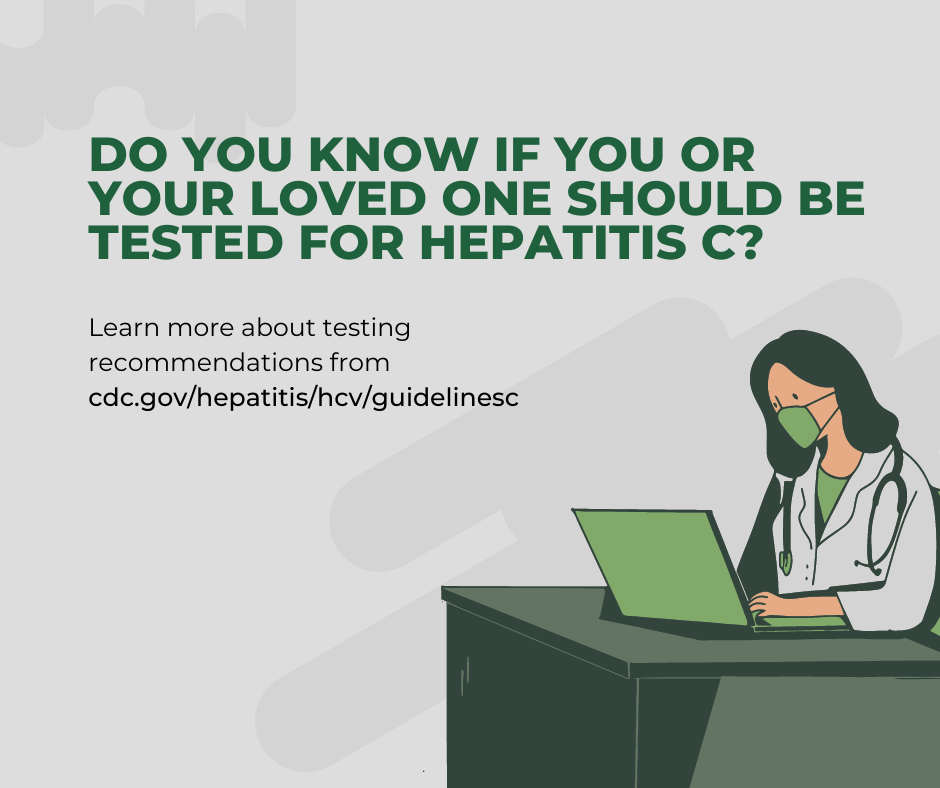
|
| You’ve heard of hepatitis B and C, but do you know the important differences between these viral infections? Hepatitis B and C can progress to lifelong infections with serious illnesses like #liver #cancer. Learn more from CDC: http://bit.ly/2jcOz6h #GWCC #KnowHepB #KnowHepC |
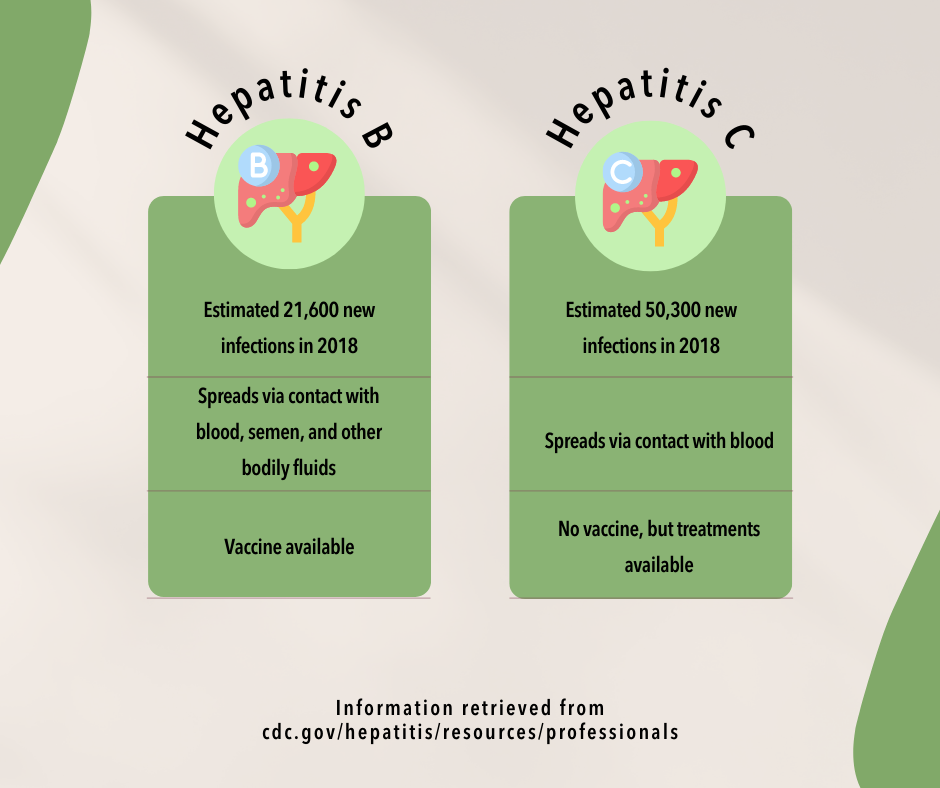
|
| #HepatitisB is common among #AsianAmericans, but most don’t know. Talk to a doctor about getting tested for hepatitis B if you or your parents were born in Asia or the Pacific Islands: https://bit.ly/3kXIjyW #GWCC #KnowHepB |
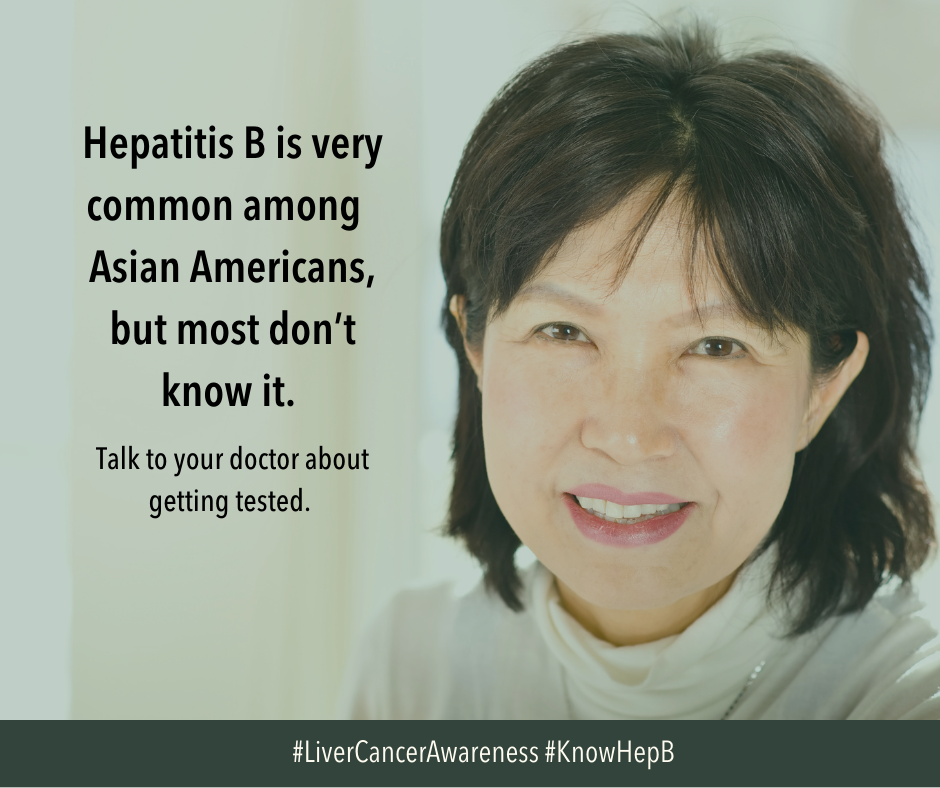
|
| Can you get #hepatitisC from casual contact with an infected person? No! It usually spreads when blood from a person infected with hepatitis C enters the body of someone who is not infected. Read this info here: http://bit.ly/2na0CTh #GWCC #KnowHepC |

|
| Among adults, men who have sex with men are at risk for hepatitis A and B. Learn more about how to protect yourself and talk to your doctor about getting vaccinated: https://bit.ly/3pqSRuO #GWCC #KnowHepB |
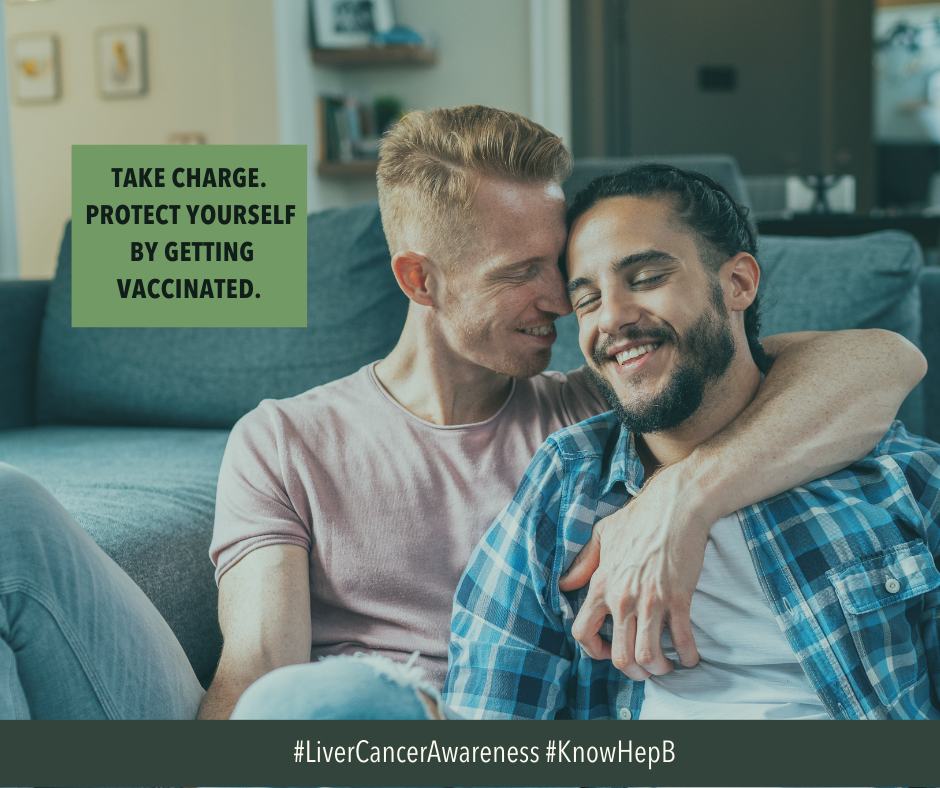
|
| CDC is leading a national education campaign called “Know More Hepatitis” to decrease the burden of chronic viral hepatitis by increasing awareness and encouraging adults who may be infected to get tested. Check it out: http://bit.ly/2nLIAuH #GWCC #KnowHepC |
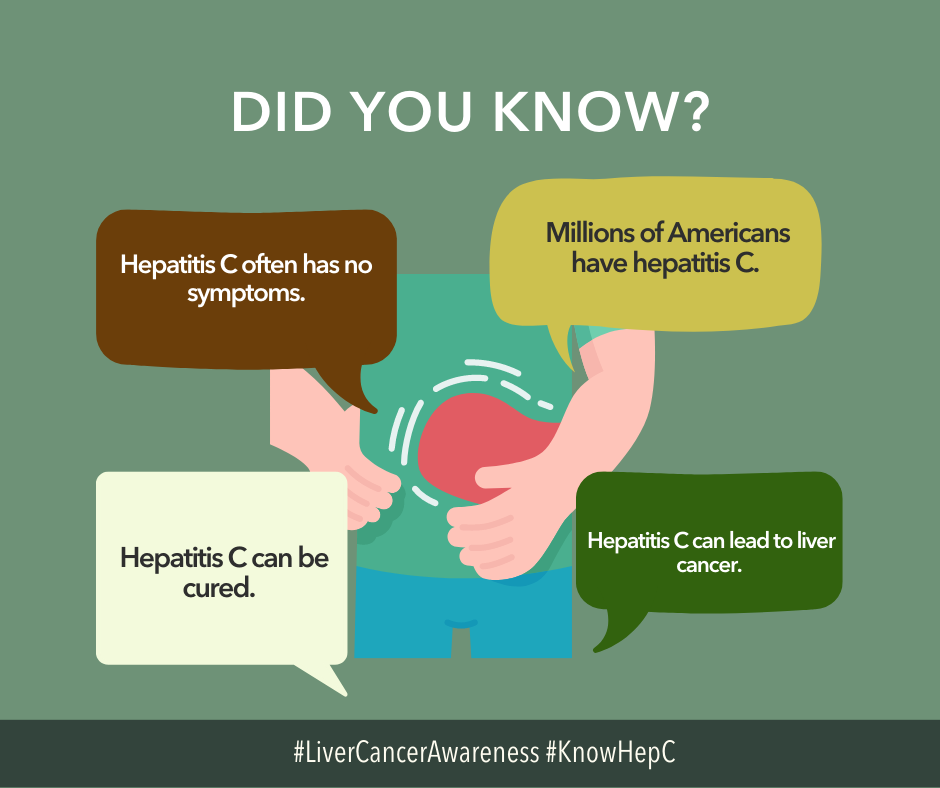
|
| Did you know #AmericanIndian and #AlaskaNative communities are disproportionately affected by hepatitis C infections? Get the facts: https://bit.ly/3pq6dHJ #GWCC #KnowHepC |
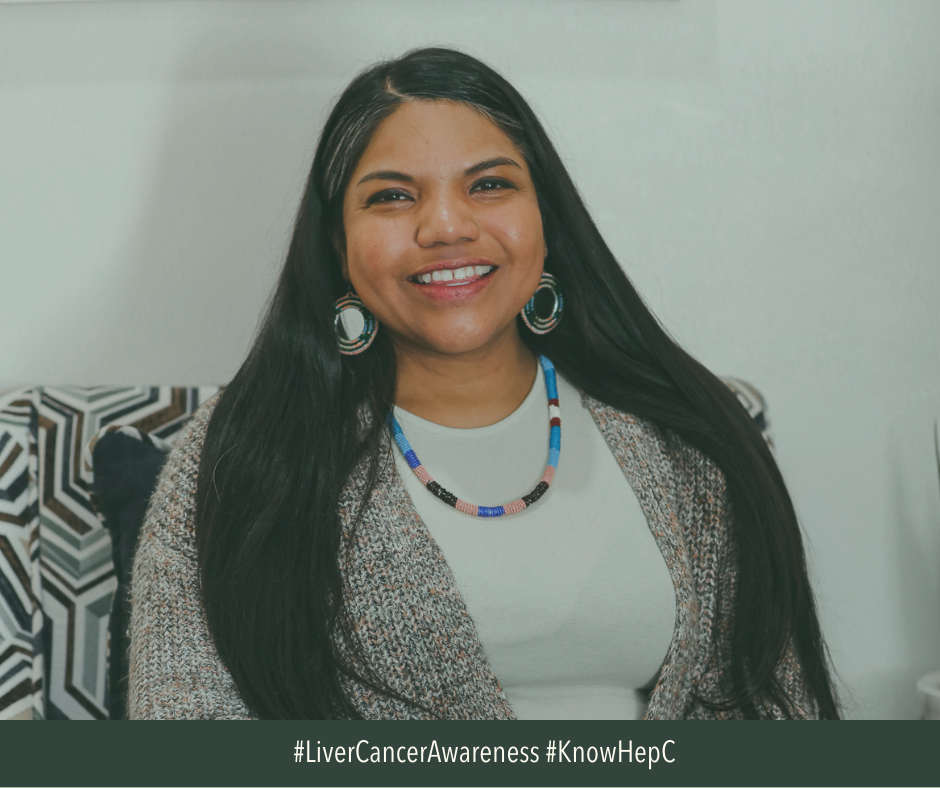
|
| Some populations such as Hispanic/Latinx/a/o persons are largely affected by #viralhepatitis & #livercancer. Learn more about how you can prevent it: https://bit.ly/3PtOWb9 #GWCC |
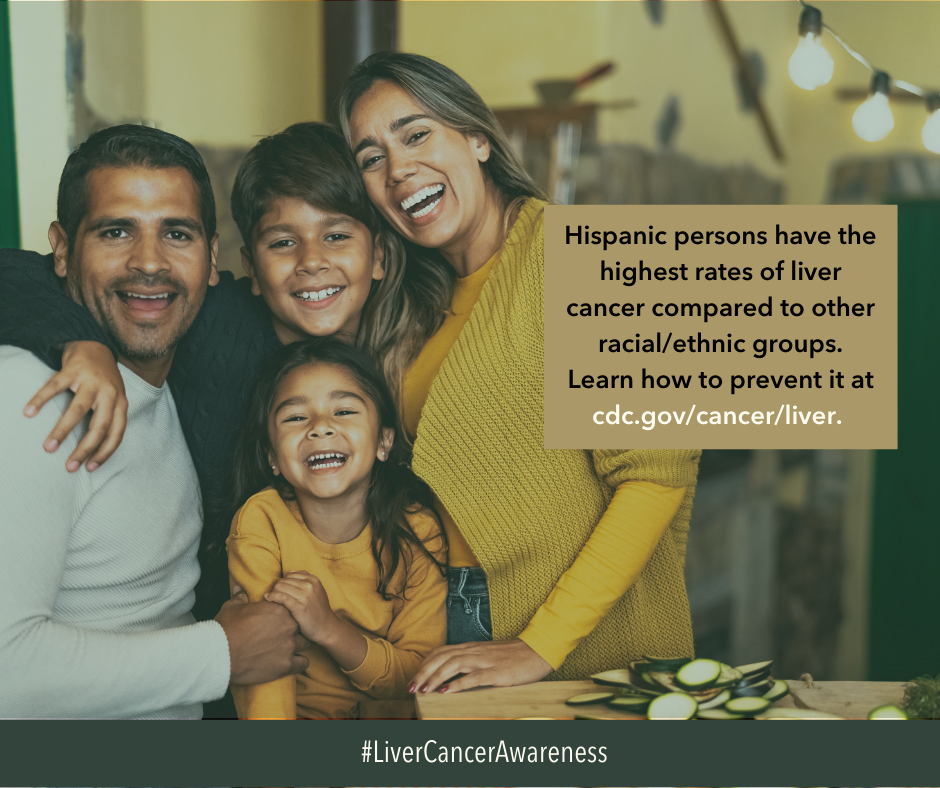
|
| Maintaining a healthy weight, avoiding excessive amounts of alcohol, getting vaccinated for #HepB and tested for #HepC are some ways to reduce the risk of liver cancer. Learn more during #LiverCancer Awareness Month here: https://bit.ly/3bZ4FRQ #GWCC #KnowHepB #KnowHepC |

|
| Public health professionals, address viral hepatitis-related liver cancer through #PSE approaches. Read this fact sheet for some ideas: https://bit.ly/2JJ3hTu #GWCC #livercancer |
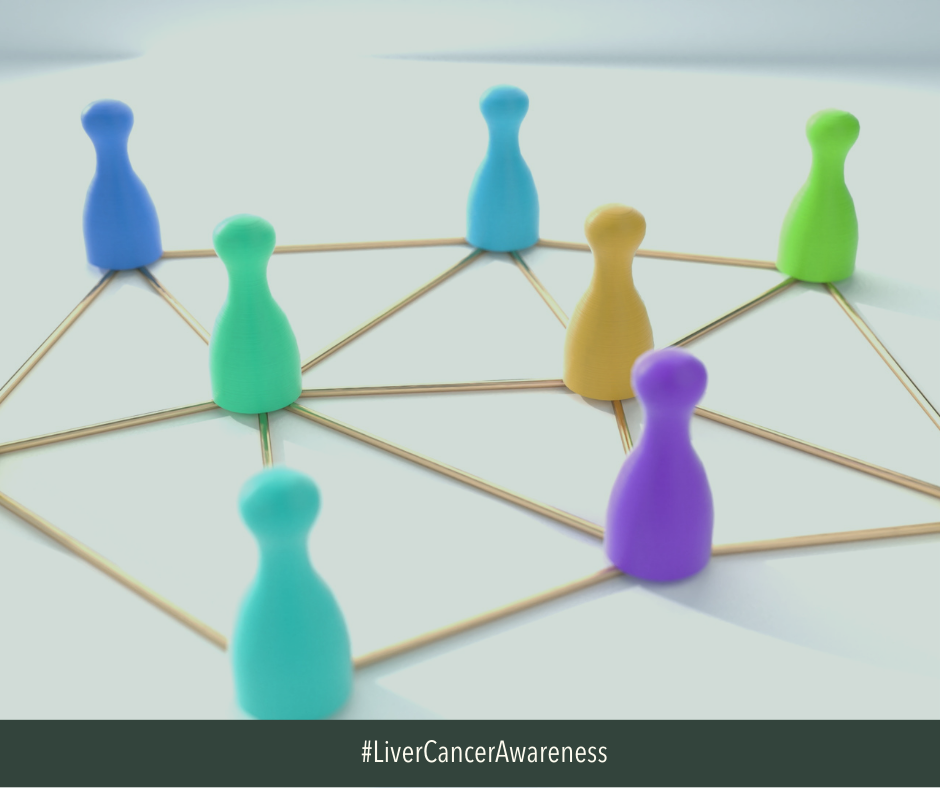
|
| An estimated 41% of US adults have delayed or avoided medical care because of the #pandemic. Talk to your doctor about safely resuming viral hepatitis screening, care and next steps. #GWCC #KnowHepB #KnowHepC #LiverCancerAwareness |
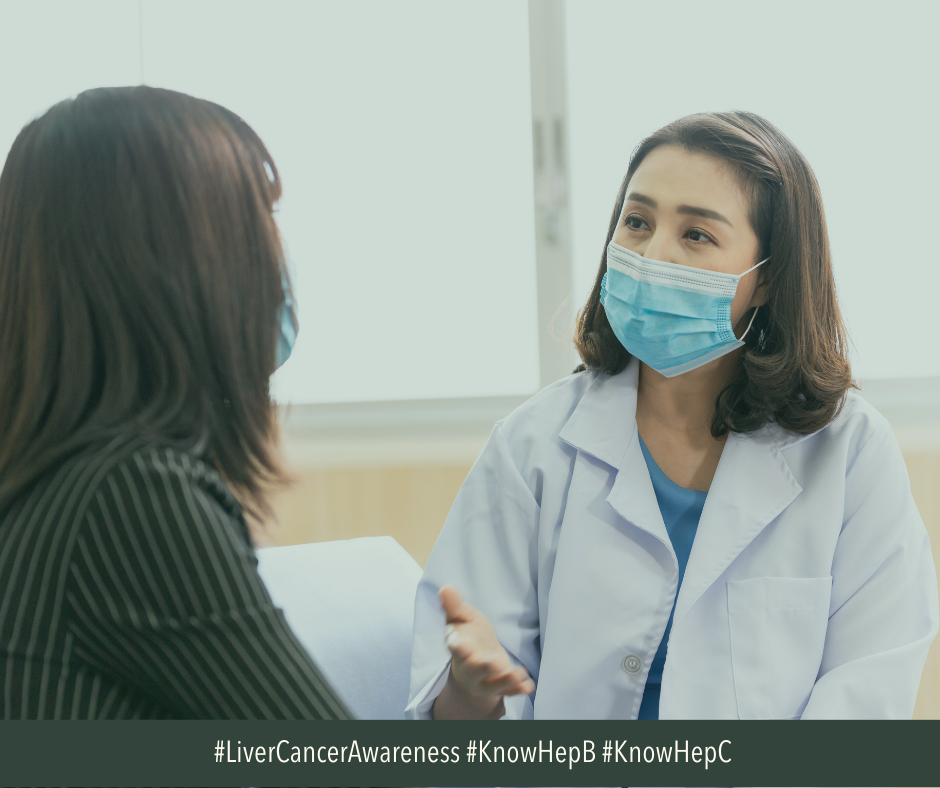
|
- How to Post on LinkedIn
-
- Download the suggested graphic.
- Highlight the corresponding message with your cursor. Right click and select "Copy."
- Open LinkedIn. If you aren't already logged in, enter your email address and password, then tap "Log in."
- Tap "Start a post" from the main share box. This box is at the top of your profile.
- Tap "Photo" from the top of the post screen, then select the downloaded graphic to upload and tap "Done." Doing so adds the photo to your post.
- Tap "Post." It's in the the bottom-right. Doing so will create your post and add it to the page you're on.
| Message | Suggested Graphic |
| Health care professionals: Did you know CDC offers tools and resources for you to talk about viral hepatitis with your patients? Get the latest info here: http://bit.ly/2jkSJwM #GWCC #KnowHepB #KnowHepC |

|
| Providers, take time to identify patients at risk for #Hepb or #HepC. The University of Washington National Hepatitis Training Center offers free educational resources for clinicians on hepatitis B and hepatitis C. Learn about prevention, diagnosis and management via these links: http://bit.ly/2mjlMkz & https://bit.ly/3dBWvPY #GWCC #KnowHepB #KnowHepC |
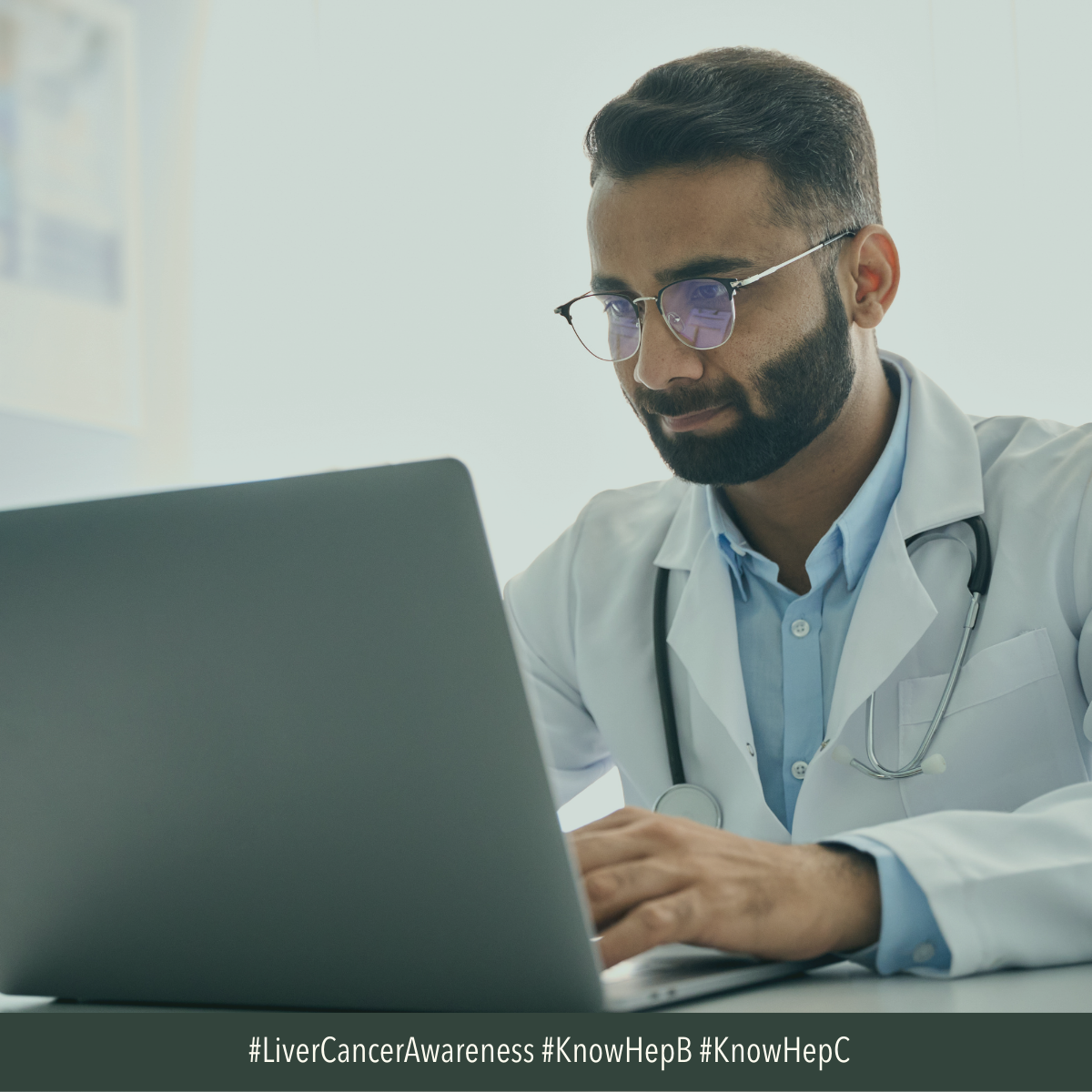
|
- How to Post on Instagram
-
- Download the suggested graphic.
- Highlight the corresponding message with your cursor. Right click and select "Copy."
- Open Instagram. If you aren't already logged in, enter your username (or phone number) and password, then tap "Log in."
- Tap the plus sign box. This box is at the top right. Select the downloaded graphic or drag it into the box to upload it.
- Select "Square (1:1)" for the aspect ratio, then click "Next."
- Ignore the filters screen, then click "Next" again.
- Paste the caption where it says, "Write a caption..." at the top.
- Under "Accessibility," consider adding alt text to describe the photo for people with visual impairments.
- Tap "Share." It's in the bottom-right corner of the screen.
Download All Messages and Graphics
Social media management tools like Hootsuite and Sprout Social offer bulk scheduling options for uploading multiple messages at once. The spreadsheets below can be adapted to fit multiple scheduling platforms or services. They are currently formatted to work with Sprout Social's bulk scheduling option. Please review the bulk scheduling format requirements for your specific platform before posting. Messages are sorted by network.
Download All Facebook Messages
Download All LinkedIn Messages
Download All Instagram Messages
If you would like to download all images in this social media toolkit, click on each network below for a zip file with each network's graphics. Please note that these image sizes are slightly smaller than the links above due to file size limitations. If you would like to download full resolution versions, simply click on the "Download Graphic" link below each image in the message tables above.
Download All Facebook Graphics
Download All LinkedIn Graphics
Download All Instagram Graphics
References
- Centers for Disease Control and Prevention. (2022, April 11). Hepatitis Awareness Month. Retrieved from Centers for Disease Control and Prevention: https://www.cdc.gov/hepatitis/awareness/HepatitisAwarenessMonth.htm
- American Association for Cancer Research. (n.d.). October is Liver Cancer Awareness Month. Retrieved from American Association for Cancer Research: https://www.aacr.org/patients-caregivers/awareness-months/liver-cancer-awareness-month/
- U.S. Cancer Statistics Working Group. (2022, June). U.S. Cancer Statistics Data Visualizations Tool, based on 2021 submission data (1999-2019). Retrieved from U.S. Department of Health and Human Services, Centers for Disease Control and Prevention and National Cancer Institute: https://gis.cdc.gov/Cancer/USCS/?CDC_AA_refVal=https%3A%2F%2Fwww.cdc.gov%2Fcancer%2Fdataviz%2Findex.htm#/AtAGlance/
- National Academies of Sciences. (2017). A National Strategy for the Elimination of Hepatitis B and C: Phase Two Report. Washington, DC: The National Academies Press. Retrieved from https://nap.nationalacademies.org/catalog/24731/a-national-strategy-for-the-elimination-of-hepatitis-b-and-c
- U.S Department of Health and Human Services. (2016, June 7). Viral Hepatitis in the United States: Data and Trends. Retrieved from https://www.hhs.gov/hepatitis/learn-about-viral-hepatitis/data-and-trends/index.html
- Centers for Disease Control and Prevention. (2020). What is Viral Hepatitis? Retrieved from https://www.cdc.gov/hepatitis/abc/index.htm
- U.S. Department of Health and Human Services. (2020). Viral Hepatitis National Strategic Plan for the United States: A Roadmap to Elimination (2021-2025). Washington, DC. Retrieved from https://www.hhs.gov/sites/default/files/Viral-Hepatitis-National-Strategic-Plan-2021-2025.pdf
- Prevent Cancer Foundation. (2016). Think about the link: Survey research executive summary. Retrieved from http://preventcancer.org/wp-content/uploads/2016/01/TATL-Campaign-Research-Executive-Summary.pdf
- Norton, B.L., Voils, C.I., Timberlake, S.H., Hecker, E.J., Goswami, N.D., Huffman, K.M., Stout, J.E. (2014). Community- based HCV screening: Knowledge and attitudes in a high risk urban population. BMC Infections Diseases, 14, 74-82. doi: 10.1186/1471-2334-14-74.
- Marinho, R.T. and Barreira, D.P. (2013). Hepatitis C, stigma and cure. World Journal of Gastroenterology, 19(40), 6703- 6709. doi:10.3748/wjg.v19.i40.6703
- Grundy, G., Beeching, N. (2004). Understanding social stigma in women with hepatitis. Nursing Standard, 19(4), 35-39. doi: 10.7748/ns2004.10.19.4.35.c3720
- Jorgensen, C., Chen, S., Carnes, C.A., Block, J., Chen, D., Caballero, J…Cohen, C. (2016). “Know Hepatitis B:” A multilingual communications campaign promoting testing for hepatitis B among Asian Americans and Pacific Islanders. Public Health Reports, 131(Suppl 2), 35-40. https://www.ncbi.nlm.nih.gov/pmc/articles/PMC4853326/
- Centers for Disease Control and Prevention. (2022, February 16). Perinatal Transmission. Retrieved from https://www.cdc.gov/hepatitis/hbv/perinatalxmtn.htm
- National Cancer Institute. (2020). Cancer disparities. Retrieved August 11, 2021 from https://www.cancer.gov/about-cancer/understanding/disparities
- Jemal, A., Ward, E. M., Johnson, C. J., Cronin, K. A., Ma, J., Ryerson, B., Mariotto, A., Lake, A. J., Wilson, R., Sherman, R. L., Anderson, R. N., Henley, S. J., Kohler, B. A., Penberthy, L., Feuer, E. J., & Weir, H. K. (2017). Annual Report to the Nation on the Status of Cancer, 1975-2014, Featuring Survival. Journal of the National Cancer Institute, 109(9), djx030. https://doi.org/10.1093/jnci/djx030
- White-Means, S., and Osmani, A. R. (2017). Racial and ethnic disparities in patient-provider communication with breast cancer patients: Evidence from 2011 MEPS and experiences with cancer supplement. INQUIRY: The Journal of Health Care Organization, Provision, and Financing, 54, 1-17. https://doi.org/10.1177/0046958017727104
- Centers for Disease Control and Prevention (2021). About Social Determinants of Health (SDOH). Retrieved from https://www.cdc.gov/socialdeterminants/about.html
- Hepatitis B Foundation. (2022). Coalition Against Hepatitis for People of African Origin (CHIPO). Retrieved from https://www.hepb.org/research-and-programs/chipo/
- Centers for Disease Control and Prevention. (2020). Cancer Incidence Among African Americans, United States—2007–2016. USCS data brief, no 15. Atlanta, GA: Centers for Disease Control and Prevention, US Department of Health and Human Services; 2020. Retrieved from https://www.cdc.gov/cancer/uscs/about/data-briefs/no15-cancer-incidence-african-americans-2007-2016.htm
- Pomenti, S., Gandle, C., Abu Sbeih, H., Phipps, M., Livanos, A., Guo, A., Yeh, J., Burney, H., Liu, H., Dakhoul, L., Kettler, C., Gawrieh, S., deLemos, A., Scanga, A., Chalasani, N., Miller, E., & Wattacheril, J. (2020). Hepatocellular Carcinoma in Hispanic Patients: Trends and Outcomes in a Large United States Cohort. Hepatology Communications, 4(11), 1708–1716. https://doi.org/10.1002/hep4.1575
- American Society of Clinical Oncology. (2021, January). Liver Cancer: Screening. Retrieved from https://www.cancer.net/cancer-types/liver-cancer/screening#:~:text=Screening%20options%20for%20liver%20cancer,magnetic%20resonance%20imaging%20(MRI)
- Nuestras Voces. (n.d.). Protect Yourself Against Liver Cancer! Retrieved from https://www.nuestrasvoces.org/uploads/2/5/8/7/25879931/cancer_infographic_v2.12liver.pdf
- Centers for Disease Control and Prevention. (2021, April 7). Know Hepatitis B. Retrieved from https://www.cdc.gov/knowhepatitisB/
- Do, T.N., Name, S. (2011). Knowledge, awareness and medical practice of Asian Americans/Pacific Islanders on chronic hepatitis B infection. Pogon Sahoe Yon'Gu, 31(3), 341-364. Retrieved from https://www.ncbi.nlm.nih.gov/pmc/articles/PMC4139091/pdf/nihms440000.pdf
- Bruce, V., Eldredge, J., Leyva, Y., Mera, J., English, K., & Page, K. (2019). Hepatitis C Virus Infection in Indigenous Populations in the United States and Canada. Epidemiologic reviews, 41(1), 158–167. https://doi.org/10.1093/epirev/mxz015
- Leston, J., Finkbonner, J. (2016). The need to expand access to hepatitis C virus drugs in the Indian Health Service. Journal of the American Medical Association, 316(8), 817-818. doi: 10.1001/jama.2016.7186
- American Indian Cancer Foundation. (n.d.). Cancer Plan 2020-2022. Retrieved from https://www.americanindiancancer.org/wp-content/uploads/2020/07/Urban-Cancer-Solutions-Cancer-Plan_-2020-2022-Version_-6_16_2020.pdf
- Centers for Disease Control and Prevention. (2020). Viral Hepatitis: Protect Yourself-Get Vaccinated Against Hepatitis A and Hepatitis B. Retrieved from https://www.cdc.gov/hepatitis/populations/MSM-Vaccination.htm
- Centers for Disease Control and Prevention (2015). Viral hepatitis and men who have sex with men. Retrieved from https://www.cdc.gov/hepatitis/populations/msm.htm
- Nyamathi, A., Salem, B., Reback, C.J., Shoptaw, S., Branson, C.M., Idemundia, F.E.,…Liu, Y. (2013). Correlates of hepatitis B virus and HIV knowledge among gay and bisexual homeless young adults in Hollywood. American Journal of Men’s Health, 7(1), 18-26. doi: 10.1177/1557988312456068
- Lifson, A.R., Halcon, L.L. (2001). Substance abuse and high-risk needle-related behaviors among homeless youth in Minneapolis: Implications for prevention. Journal of Urban Health, 78, 690-698. doi: 10.1093/jurban/78.4.690
- Centers for Disease Control and Prevention. (2020). Viral Hepatitis: People Who Use or Inject Drugs and Viral Hepatitis. Retrieved from https://www.cdc.gov/hepatitis/populations/idu.htm
- Klevens, R. M., S. Liu, H. Roberts, R. B. Jiles, and S. D. Holmberg. (2014). Estimating acute viral hepatitis infections from nationally reported cases. American Journal of Public Health 104(3):482-487. https://www.ncbi.nlm.nih.gov/pmc/articles/PMC3953761/
- University of Washington. (n.d.). HCV epidemiology in the United States. Retrieved from https://www.hepatitisc.uw.edu/pdf/screening-diagnosis/epidemiology-us/core-concept/all
- Centers for Disease Control and Prevention. (2020). Viral Hepatitis: People Experiencing Homelessness and Viral Hepatitis. Retrieved from https://www.cdc.gov/hepatitis/populations/peh.htm


